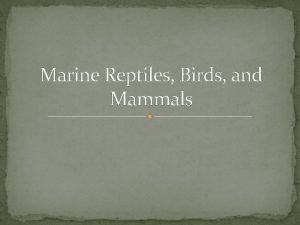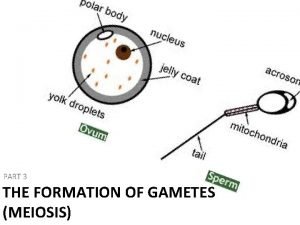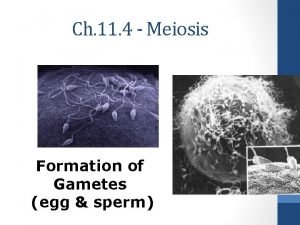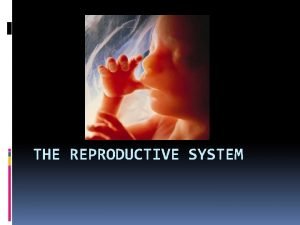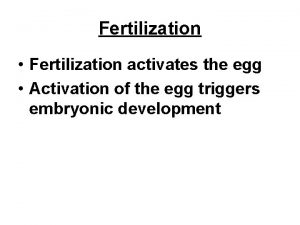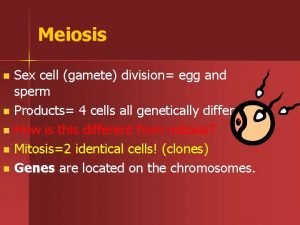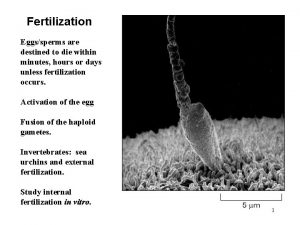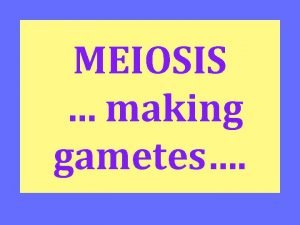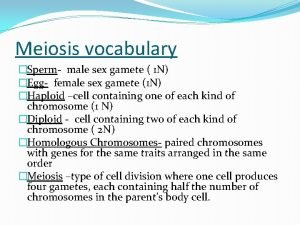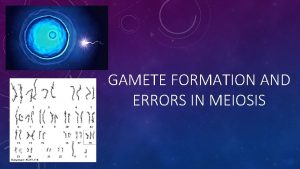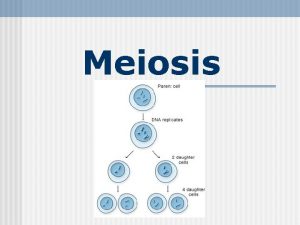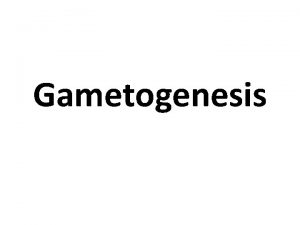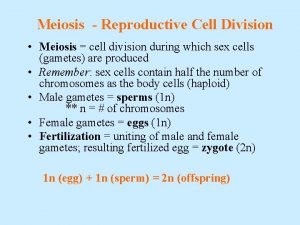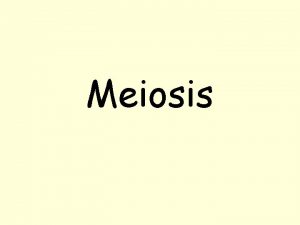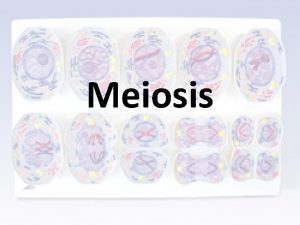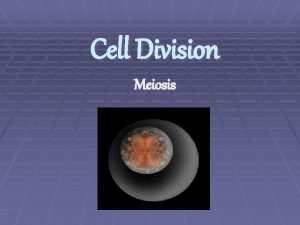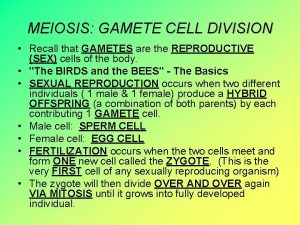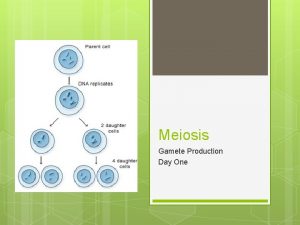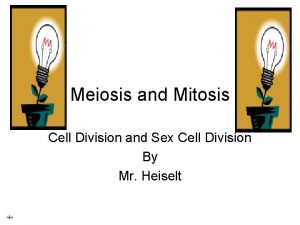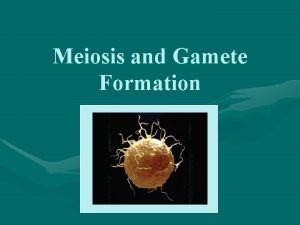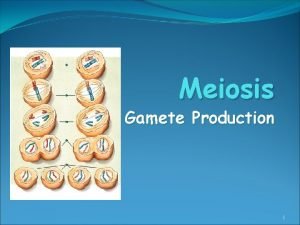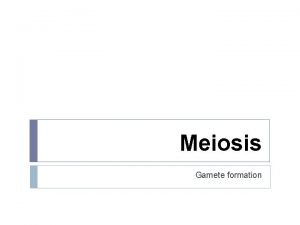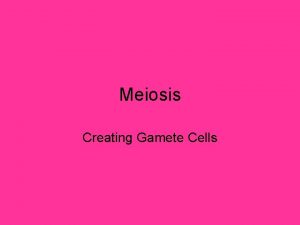Meiosis Sex cell gamete division egg and sperm




















- Slides: 20

Meiosis Sex cell (gamete) division= egg and sperm n Products= 4 cells all genetically different n How is this different from mitosis? n Mitosis=2 identical cells! (clones) n Genes are located on the chromosomes. n

Chromosome number Homologous Chromosome – The chromosomes that make up a pair, one chromosome from each parent. n Diploid= 2 n, the # of chromosomes contained in “body” cells n Gamete – sex cells that have half the number of chromosomes. n Haploid – n, the # of chromosomes found in sex cells (gametes) n

Diploid Vs. Haploid n Why do sex cells have to be haploid? n They must have half the # of chromosomes to produce a viable gamete (23 mom+ 23 dad= zygote)

Quick Thinking… If a haploid cell in a frog is 13, what is the diploid cell? n 26 n If the muscle cell of a dog has 78 chromosomes, what does it’s egg cell have? n 39 n

Here’s Some More…. n n n n If Diploid= 8 Then Haploid= 4 If Haploid=70 Then Diploid= 140 If Diploid= 46 Then Haploid= 23 If Haploid = 56 Then Diploid= 112


Phases of Meiosis – cell division that reduces the # chromosomes, referred to as “reduction division”. n Meiosis I: n – Interphase – chromosomes replicate (DNA) – Prophase I – Metapase I – Anaphase I – Telophase I

Prophase I same as mitosis PLUS… tetrads -2 homologous chromosomes pair up. n Crossing over occurs =each tetrad “swaps” genes; provides for genetic variation n

Crossing Over!!!

Metaphase I n Same as mitosis, but the chromosomes line up as PAIRS (tetrads) at the plate

Anaphase I n Same as mitosis, except the pairs are separated, not the chromosome!!

Telophase I Same as mitosis, except… n DNA does not unwind, it stays in chromosome form for the next set of division n 2 cells not identical… why? n Do the 2 daughter cells undergo interphase II?

NO INTERPHASE II n n n The DNA stays wound for round 2 of meiosis for one reason. We now have 2 diploid chromosomes, we must divide again to reach the haploid state. We do not replicate the DNA again…

Can you guess the next stages? Prophase II n Metaphase II n Anaphase II n Telophase II n Cytokinesis n All look similar to mitosis, sisters get split in Anaphase II like mitosis!!! n

Prophase II Chromosomes condense. n Spindles form in each new cell. n Spindle fibers attach to chromosomes n

Metaphase II Centromeres of chromosomes line up randomly at the equator of each cell

Anaphase II Centromeres split n Sister chromatids separate and move to opposite poles n

Telophase II 4 nuclei form around chromosomes. n Spindles break down. n Cell divides n

End Result…Finally! n n Sperm= 4 viable haploid (23) sperm Egg= 1 viable egg (23), three polar bodies

Meiosis = Genetic Variation 1) 2) 3) Independent Assortment -all pairs separate independently -gives approx. 8 million variations Crossing Over (prophase I) -adds recombination -limitless variations Random Fertilization - gametes from independent organisms squares the variations (64 million)
 Kurt bumby
Kurt bumby Greenhouse sex
Greenhouse sex Xxtesticles
Xxtesticles Sex sex sex
Sex sex sex Secondary sexual characters
Secondary sexual characters Why are sperm whales called sperm whales
Why are sperm whales called sperm whales Crossing over occurs during
Crossing over occurs during Mitosis and meiosis
Mitosis and meiosis Two cells are produced
Two cells are produced Importance of meiosis
Importance of meiosis Haploid and diploid venn diagram
Haploid and diploid venn diagram Random assortment vs independent assortment
Random assortment vs independent assortment What is the joining of egg and sperm called
What is the joining of egg and sperm called Frog blastula diagram
Frog blastula diagram Egg sperm
Egg sperm Identify the structure
Identify the structure Diagram of fertilization
Diagram of fertilization Section 10-2 cell division
Section 10-2 cell division Cell cycle and cell division
Cell cycle and cell division Cell cycle phases in order
Cell cycle phases in order X linked punnett square
X linked punnett square





